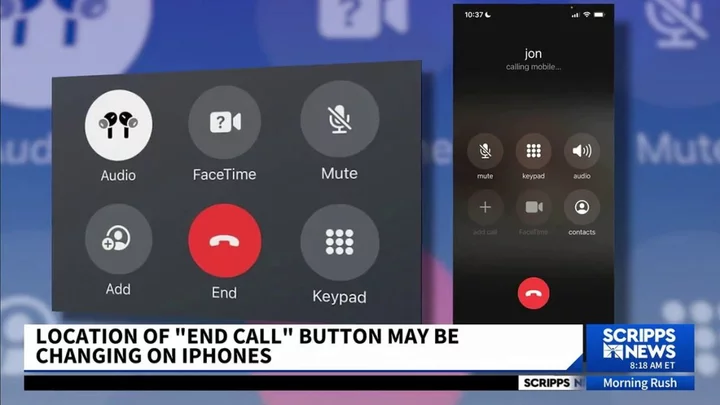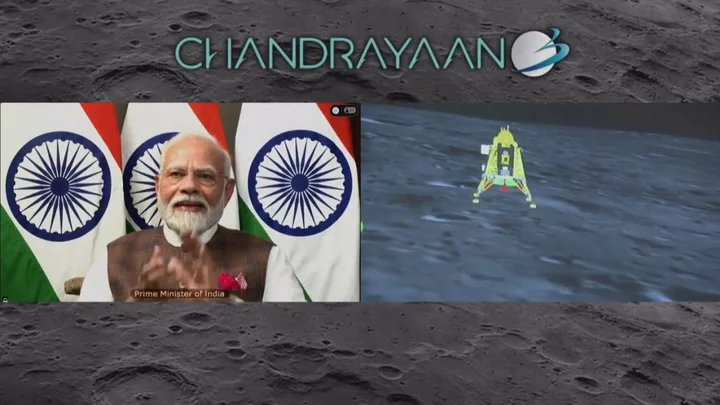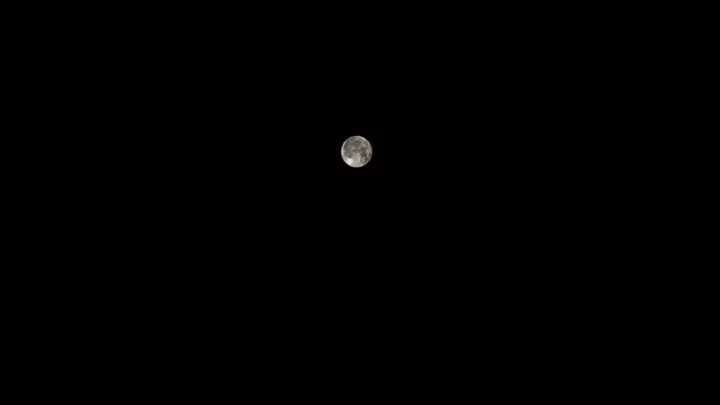
A new 'Antarctica' accent has been discovered by scientists
Antarctica might be the only continent on Earth with no natural human habitation, but it’s emerged that an “Antarctica accent” is very much a thing. Despite having no locals, thousands of scientists have made up an ever-changing population in research stations over the years. The continent is so isolated and the level of interaction between researchers is so intense, that a common accent is beginning to emerge there despite people coming from different parts of the world. At its busiest points in the year during the summer, Antarctica is home to around 5,000 people. Only around 1,000 people live there during the winter months. The idea of accents changing due to human interaction on Antarctica is no different to the phenomenon seen throughout history at a glacial pace. However, given the very specific sample size, it’s an opportunity for scientists to study it at a much quicker rate and on a much smaller scale. Experts at the Ludwig Maximilian University of Munich published a study in 2019 which focused on the change in accents observed in 11 people who took part in the British Antarctic Survey. @human.1011 There’s an Antarctic Accent! #language #linguistics #english #antarctica Of the 11 who were studied, eight came from England, one from the US, one from Germany and one from Iceland. Their voices were recorded every six weeks, and the team found that over time they developed longer vowel sounds. There was a physical change too, with participants pronouncing the “ou” sound in the front of their mouths rather than the back of their throats. Speaking to IFL Science, Jonathan Harrington, study author and Professor of Phonetics and Speech Processing at the Ludwig-Maximilians University of Munich said: "The Antarctic accent is not really perceptible as such – it would take much longer for it to become so – but it is acoustically measurable. "It's mostly an amalgamation of some aspects of the spoken accents of the winterers before they went to Antarctica, together with an innovation. It's far more embryonic [than conventional English accents] given that it had only a short time to develop and also, of course, because it's only distributed across a small group of speakers.” Sign up for our free Indy100 weekly newsletter Have your say in our news democracy. Click the upvote icon at the top of the page to help raise this article through the indy100 rankings.
2023-08-24 20:51

Apple issues danger warning to iPhone users
The Apple iPhone is one of the most popular mobile devices in the world, but the company has issued a new danger warning to users that could help save lives. Popular among those particularly in the West, iPhones are prevalent in most people’s everyday lives, ever since the first one was released in June 2007. However, Apple has issued a stark warning for those who leave them charging overnight, highlighting a risk of fire, electrocution and injury. The warning by Apple comes under its updated user guide under the article titled, “Important safety information for iPhone” in which it is warned that charging phones over long periods poses a risk. It read: “Use common sense to avoid situations where your skin is in contact with a device, its power adapter, or a wireless charger when it’s operating or connected to a power source for long periods of time. “For example, don’t sleep on a device, power adapter, or wireless charger, or place them under a blanket, pillow, or your body, when it’s connected to a power source. “Keep your iPhone, the power adapter, and any wireless charger in a well-ventilated area when in use or charging. Take special care if you have a physical condition that affects your ability to detect heat against the body.” The company confirmed consumers can use “‘Made for iPhone’ or other third-party cables” that are compliant with relevant safety regulations. But, it added: “Other adapters may not meet applicable safety standards, and charging with such adapters could pose a risk of death or injury.” Sign up to our free Indy100 weekly newsletter Have your say in our news democracy. Click the upvote icon at the top of the page to help raise this article through the indy100 rankings.
2023-08-24 19:52

Terrifying video shows how long leaders have to act after a nuclear weapons launch
A terrifying video has shown just how little time world leaders have to act in the event that nuclear weapons are launched. In the video, shared by the educational channel Kurzgesagt, a potential scenario of a country launching nuclear weapons is set up, with a commander talking the viewer, from the point of view of a world leader, through what is going on. The commander explained that an enemy had released nuclear weapons primarily targeting military bases and nuclear command centres. Secondary targets include oil refineries, power stations and ports. The commander grimly explained: “Deaths from the blast and burns may be a few million today. It’s morning rush hour and there’s not much to be done for people stuck in traffic.” Radiation effects from the blast, the commander explained, would be dependent on the weather and direction of the wind. Those in populated urban areas would be less able to flee and there would be “dozens of millions of deaths” in just a few weeks. It is explained that the 400 nuclear weapons in silos need to be launched “now” before they are taken out by the enemy warheads. Nuclear-capable bomber planes need to take off within two minutes to stand any chance of getting out of the blast. The horrifying intensity of the nuclear war continues as the commander explains that there is nothing that can be done for civilians and that if the order is not given immediately, the war could be over before they even have a chance to retaliate. Thankfully, the scenario was only fake, but the video ended by explaining that the world has been very close to a similar situation unfolding several times due to mistakes or errors – and that it only takes one person to give the order. In 1955, a Russian radar detected what it thought was a missile launch from a submarine, causing its military to be on high alert. But, it turned out it was actually a scientific rocket studying the auroras. Sign up to our free Indy100 weekly newsletter Have your say in our news democracy. Click the upvote icon at the top of the page to help raise this article through the indy100 rankings.
2023-08-24 19:23

India Needs $13 Trillion to Hit Net Zero Emissions by 2050
India will need to invest $12.7 trillion in its energy system, or more than three times its gross
2023-08-24 14:58

'Hidden structures' discovered deep beneath the dark side of the moon
Scientists have just uncovered billions of years’ worth of secrets buried beneath the surface of the moon. Our celestial companion has been a source of awe and mystery since time immemorial, but now, thanks to China’s space programme, we’re starting to piece together its past. In 2018, the Chang’e-4 lander, of the Chinese National Space Administration (CNSA), became the first spacecraft ever to land on the far side (or the dark side, if you'd prefer) of the moon. Since then, it has been capturing incredible images of impact craters and extracting mineral samples, offering a long-sought insight into the structures that make up the top 1,000 feet of the moon’s surface. Earlier this month, the Chang’e-4’s findings were finally published, and the world was invited to delve deep into the history of our cherished natural satellite. The results, published in the Journal of Geophysical Research: Planets, reveal that the top 130 feet (40m) of the lunar surface are made up of multiple layers of dust, soil, and broken rocks. Hidden within these layers is a crater, which formed when a large object slammed into the moon, according to Jianqing Feng, an astrogeological researcher at the Planetary Science Institute in Tucson, Arizona, who co-led the pioneering analysis. Beneath this, Feng and his colleagues discovered five distinct layers of lunar lava that spread across the landscape billions of years ago. Experts believe that our moon formed 4.51 billion years ago, when a Mars-size object crashed into Earth and broke off a chunk of our planet, as Live Science notes. Over the following 200 million years or so, the moon continued to be pummelled by space debris, with numerous impacts leaving cracks in its surface. Just like on Earth, the moon’s mantle contained pockets of molten magma, which infiltrated the newly formed cracks thanks to a series of volcanic eruptions, Feng explained. However, the new data provided by Chang’e-4 showed that the closer the volcanic rock was to the moon’s surface, the thinner it got. "[The moon] was slowly cooling down and running out of steam in its later volcanic stage," Feng said. "Its energy became weak over time." It is understood that volcanic activity on the moon died out between a billion and 100 million years ago, which means it is largely considered “geologically dead”. However, Feng and his co-authors have suggested there could still be magma buried deep beneath the lunar surface. Chang’e-4 still has much work to do, and Feng and his team hope this is just the beginning of their literally ground-breaking mapping of the moon. Sign up for our free Indy100 weekly newsletter Have your say in our news democracy. Click the upvote icon at the top of the page to help raise this article through the indy100 rankings.
2023-08-23 22:25

Watch: India becomes first country to make historic moon landing on planet's south pole
This is the moment India made its historic first landing on the moon's south pole, just days after Russia's attempt ended in a crash. India's attempt to land its Chandrayaan-2 mission near the south pole in 2019 was unsuccessful, but the Chandrayaan-3 mission went off without a hitch. The lander, known as Vikram, touched down at 13:34 BST. It's thought no attempts have been successful so far because of its rocky landscape, making it difficult to find somewhere to land safely. Sign up to our new free Indy100 weekly newsletter
2023-08-23 20:47

Scientists discover that plants make sounds when hurt that you can hear
Plants make sounds when they’re distressed and humans are only hearing them now for the first time, scientists have found. New research has discovered that sounds are used by plants to communicate with their ecosystems – and they could be studied and used to improve growing conditions for plants in the future. Itzhak Khait of Tel Aviv University led the research, which involved studying tobacco and tomato plants. As the findings showed, the plants made high-frequency noise which could be detected five metres away. The study was published in the journal Cell, and the results “can alter the way we think about the plant kingdom, which has been considered to be almost silent until now”. Not only that, but by studying the sounds emitted by the plants experts could tell whether they were in need of water or suffering from cuts. Lilach Hadany, an evolutionary biologist at Tel Aviv University, told Vice: “We started this project from the evolutionary question: why are plants mute? It appears that plants could have a lot to benefit from acoustic communication.” “We were particularly happy that the sounds turned out to be informative – containing information on the type of the plant and the type of the stress.” The findings could change the way plants are grown and communicate with their environments in future, given that we now know information can be conveyed via the sounds. Hadany went on to say: “What we do know is that there are sounds in the air, and they contain information. “Thus, natural selection may be acting on other organisms (animals and plants) to whom the sounds are relevant, to be able to hear the sounds and interpret them. That includes animals that can hear the sounds and can use the information to choose a food source or a laying site, or potentially plants that can prepare for the stress.” The team said in the study: “Plant sound emissions could offer a way for monitoring crops water and possibly disease states—questions of crucial importance in agriculture. “In times when more and more areas are exposed to drought due to climate change, efficient water use becomes even more critical, for both food security and ecology.” Sign up for our free Indy100 weekly newsletter Have your say in our news democracy. Click the upvote icon at the top of the page to help raise this article through the indy100 rankings.
2023-08-23 19:27

India Set for First South Pole Moon Landing After Russia Crash
India is set to become the first country to land a spacecraft near the moon’s south pole after
2023-08-23 09:50

Toilet invented that is so slippy nothing can leave skid marks
A 3-D-printed toilet has been invented and the surface is so slippery that nothing can leave a mark on it. Cleaning the toilet has to be one of the grimmest household chores, but thanks to new material, you may never have to scrub a loo again. The toilet is the invention of Yike Li at Huazhong University of Science and Technology in Wuhan, China, who, alongside colleagues, invented a toilet whose surface is so slippery that nothing stains it and uses less water for each flush. The team created a prototype of the toilet around 10 times smaller than a real one. It was made using 3D printing technology, where particles of plastic and hydrophobic sand grains were fused together with lasers. The surface of the toilet was lubricated with a type of silicon oil that also penetrated the surface due to the complex structure of the material. The team tested the toilet with a variety of substances, including honey, yoghurt, muddy water as well as synthetic faeces. They found that none of the substances stuck to the toilet bowl. Amazingly, the toilet was just as slippery after having been rubbed with sandpaper over 1,000 times, which Li believes is due to the oil being able to penetrate the material of the toilet. Li believes the technology would be suited for settings in which a toilet gets a lot of use, such as on modes of transport and in public toilets. He explained: “The reduced flushing volume would result in less wasted water during transportation to the processing facilities, thereby saving transportation costs.” But, before that can happen, Li says the technology needs to be adapted for use on a full-sized toilet and also needs to be cheaper to make. You can see the toilet in action below courtesy of New Scientist. Nothing can stick to this 3D-printed slippery toilet youtu.be Sign up to our free Indy100 weekly newsletter Have your say in our news democracy. Click the upvote icon at the top of the page to help raise this article through the indy100 rankings.
2023-08-22 20:19

Bezos’ Blue Origin Methane Emissions Were Spotted by the Space Station
Methane, a powerful greenhouse gas, is thought to be responsible for more than a quarter of global warming
2023-08-21 19:29

China discovers 'hidden structures' deep beneath the dark side of the moon
Scientists have just uncovered billions of years’ worth of secrets buried beneath the surface of the moon. Our celestial companion has been a source of awe and mystery since time immemorial, but now, thanks to China’s space programme, we’re starting to piece together its past. In 2018, the Chang’e-4 lander, of the Chinese National Space Administration (CNSA), became the first spacecraft ever to land on the far side (or the dark side, if you'd prefer) of the moon. Since then, it has been capturing incredible images of impact craters and extracting mineral samples, offering a long-sought insight into the structures that make up the top 1,000 feet of the moon’s surface. Earlier this month, the Chang’e-4’s findings were finally published, and the world was invited to delve deep into the history of our cherished natural satellite. The results, published in the Journal of Geophysical Research: Planets, reveal that the top 130 feet (40m) of the lunar surface are made up of multiple layers of dust, soil, and broken rocks. Hidden within these layers is a crater, which formed when a large object slammed into the moon, according to Jianqing Feng, an astrogeological researcher at the Planetary Science Institute in Tucson, Arizona, who co-led the pioneering analysis. Beneath this, Feng and his colleagues discovered five distinct layers of lunar lava that spread across the landscape billions of years ago. Experts believe that our moon formed 4.51 billion years ago, when a Mars-size object crashed into Earth and broke off a chunk of our planet, as Live Science notes. Over the following 200 million years or so, the moon continued to be pummelled by space debris, with numerous impacts leaving cracks in its surface. Just like on Earth, the moon’s mantle contained pockets of molten magma, which infiltrated the newly formed cracks thanks to a series of volcanic eruptions, Feng explained. However, the new data provided by Chang’e-4 showed that the closer the volcanic rock was to the moon’s surface, the thinner it got. "[The moon] was slowly cooling down and running out of steam in its later volcanic stage," Feng said. "Its energy became weak over time." It is understood that volcanic activity on the moon died out between a billion and 100 million years ago, which means it is largely considered “geologically dead”. However, Feng and his co-authors have suggested there could still be magma buried deep beneath the lunar surface. Chang’e-4 still has much work to do, and Feng and his team hope this is just the beginning of their literally ground-breaking mapping of the moon. Sign up for our free Indy100 weekly newsletter Have your say in our news democracy. Click the upvote icon at the top of the page to help raise this article through the indy100 rankings.
2023-08-21 18:54

Why you should delay your first coffee of the morning
For a lot of people, coffee is one of the few things that gets them out of bed and out the door in the mornings. But while it’s tempting to whack the kettle on first thing, a health expert has stated that delaying our first coffee of the day could be much more beneficial to our health. Nutritionist Gabi from The Fast 800 urged people to wait at least 90 minutes before getting their first coffee hit [via the Mirror]. Gabi claims that we can all boost energy levels by doing so. In fact, eating on an empty stomach could even cause your body to enter stress mode and release hormones like adrenaline and cortisol. "Supporting your morning coffee routine with some smart practices can be a game changer for your overall well-being,” Gabi said. She recommends drinking water, as well as eating a meal packed with fibre and protein to balance sugar levels. “Elevated blood sugar can trigger inflammation and set us up to be on a blood sugar roller coaster for the rest of the day, thereby tanking our energy supply,” the health guru said. "Within the first hour of waking, our cortisol levels ideally acutely rise and fall in a response known as our cortisol awakening response. This rise and fall of cortisol represents a healthy nervous system and actually has a big influence on our immune health and even the risk of autoimmune development." She also states that delaying coffee for a minimum of 90 minutes promotes high energy levels. Gabi said: "Morning light exposure is a huge regulator of circadian rhythm and light exposure triggers the healthy release of cortisol in the morning to support the body’s natural rhythm. Getting natural light exposure within the first hour or so of waking is a great way to support optimal hormone balance." It comes after it was revealed that the drink also gives us an extra ‘special boost’ as well as just a caffeine hit. Scientists have claimed that the act of drinking a cup of joe gives the body a lift, making us more alert, which can’t be replicated merely with caffeine. Sign up for our free Indy100 weekly newsletter Have your say in our news democracy. Click the upvote icon at the top of the page to help raise this article through the indy100 rankings.
2023-08-21 17:17
